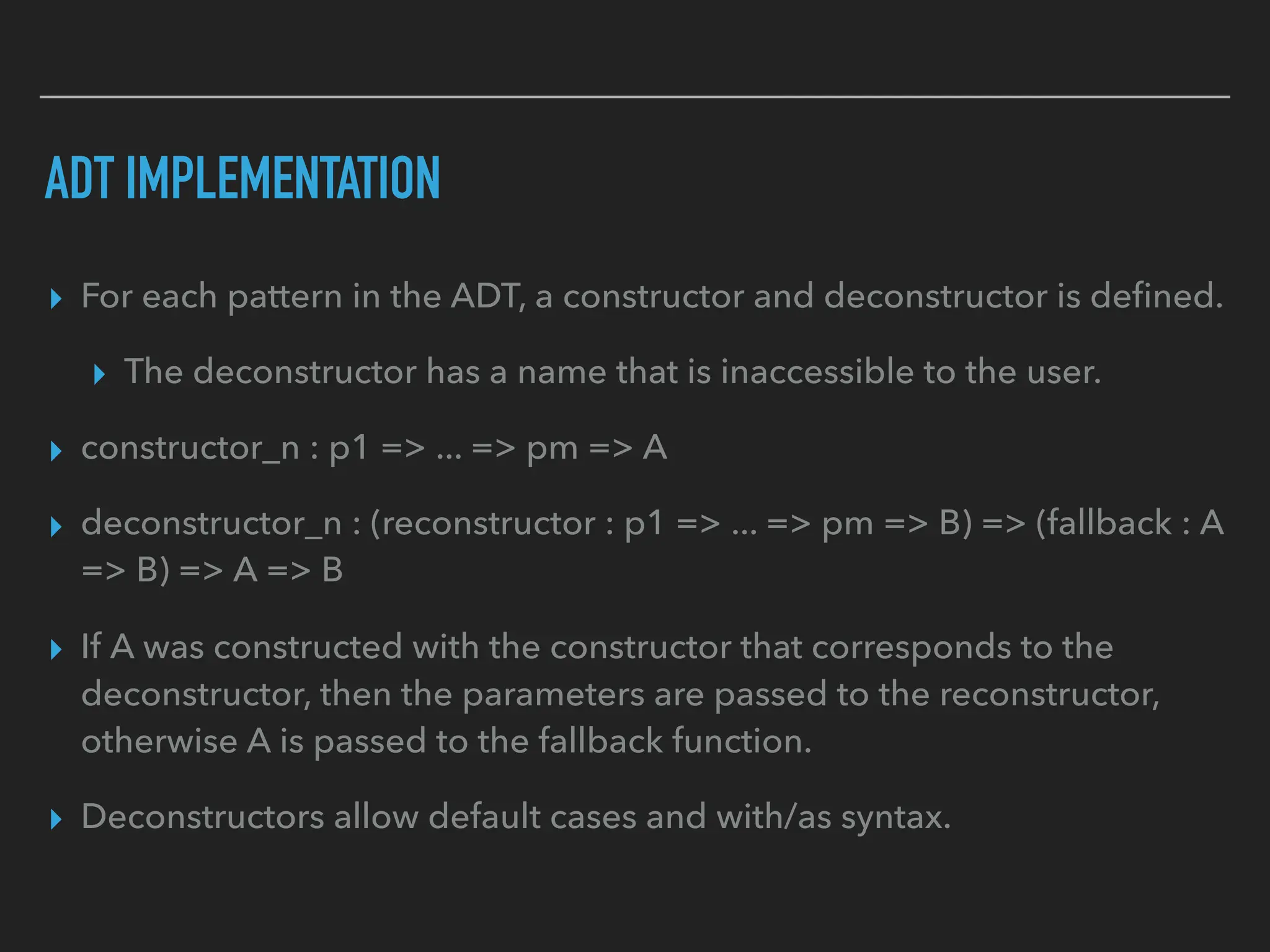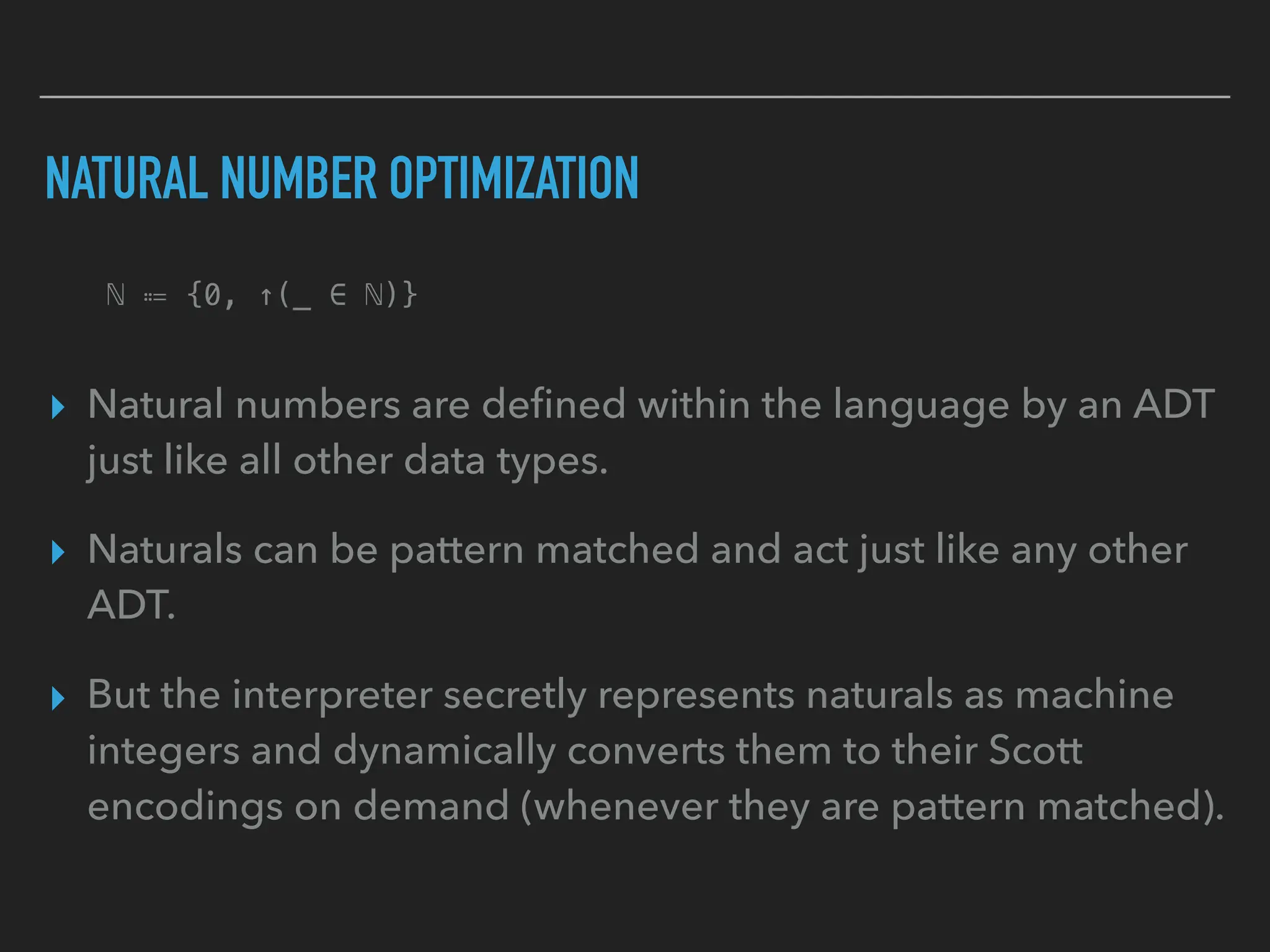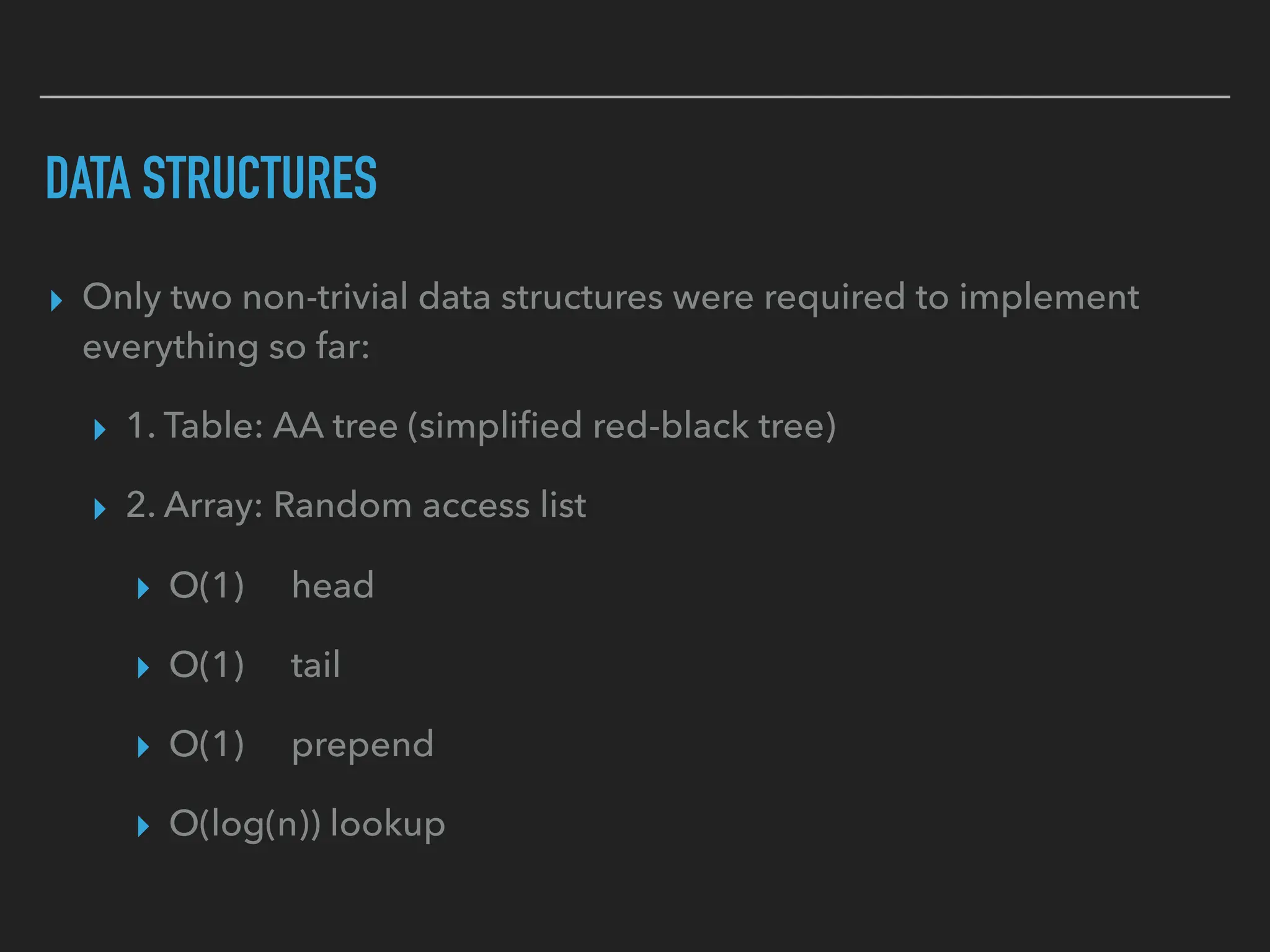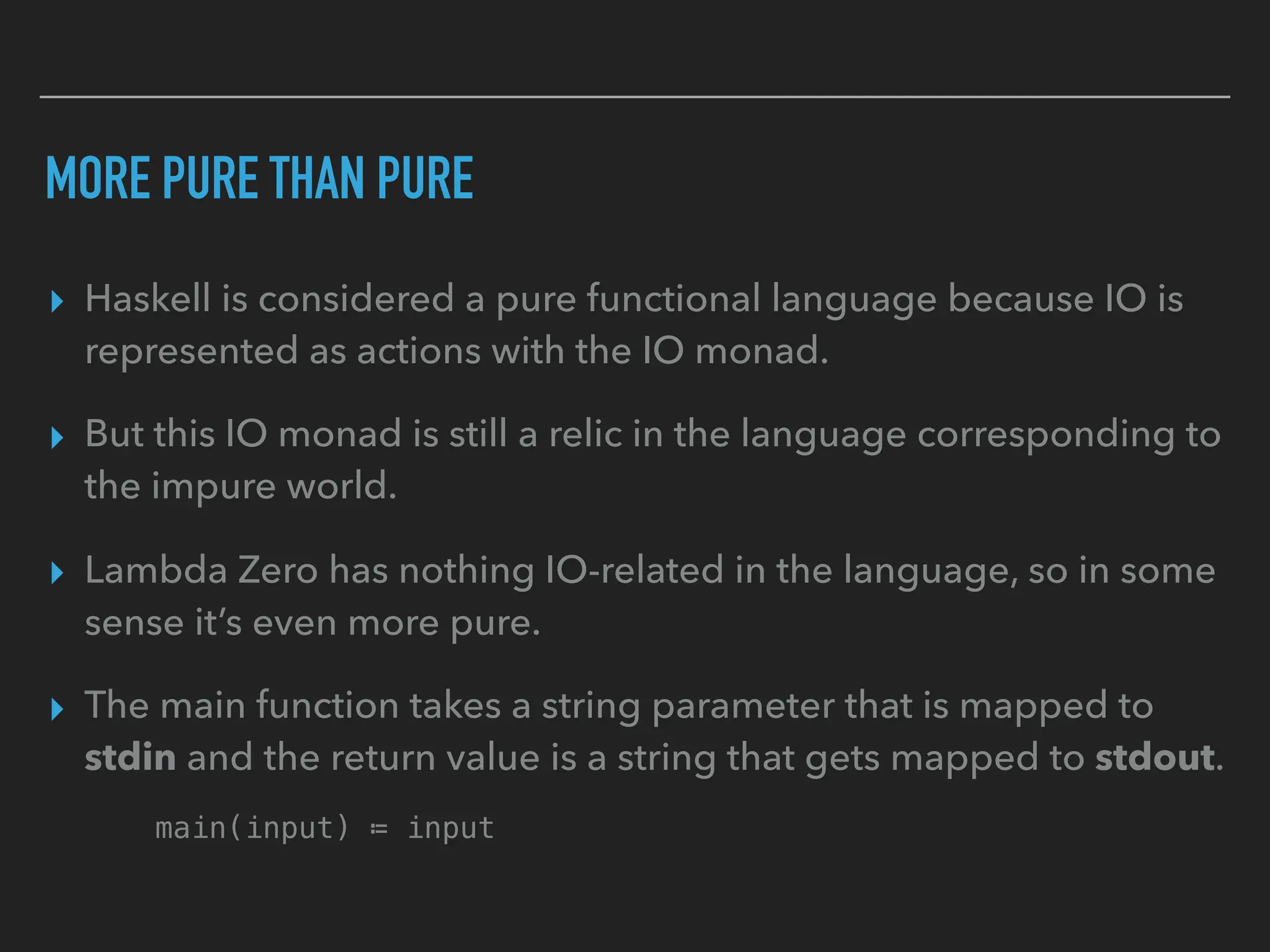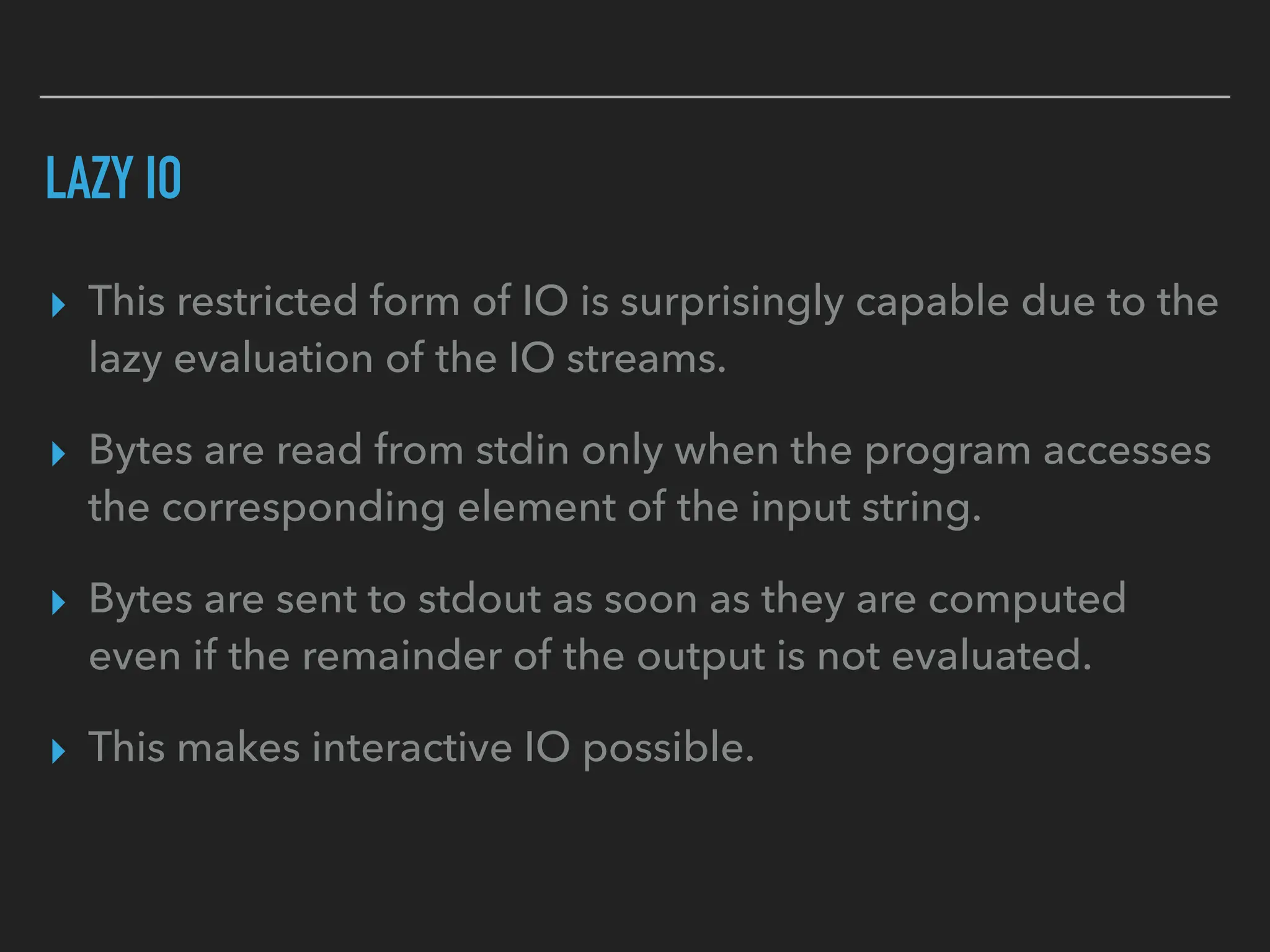Lambda Zero is a minimalist, pure, lazy functional programming language that desugars to untyped lambda calculus with optimizations. It aims to uncover the foundations of mathematics, promoting simplicity and avoiding unnecessary complexity in its design and implementation. The language features a bootstrap interpreter, lazy evaluation advantages, and a unique parsing method, employing Unicode for mathematical expressions and demonstrating a commitment to purity and mathematical clarity.
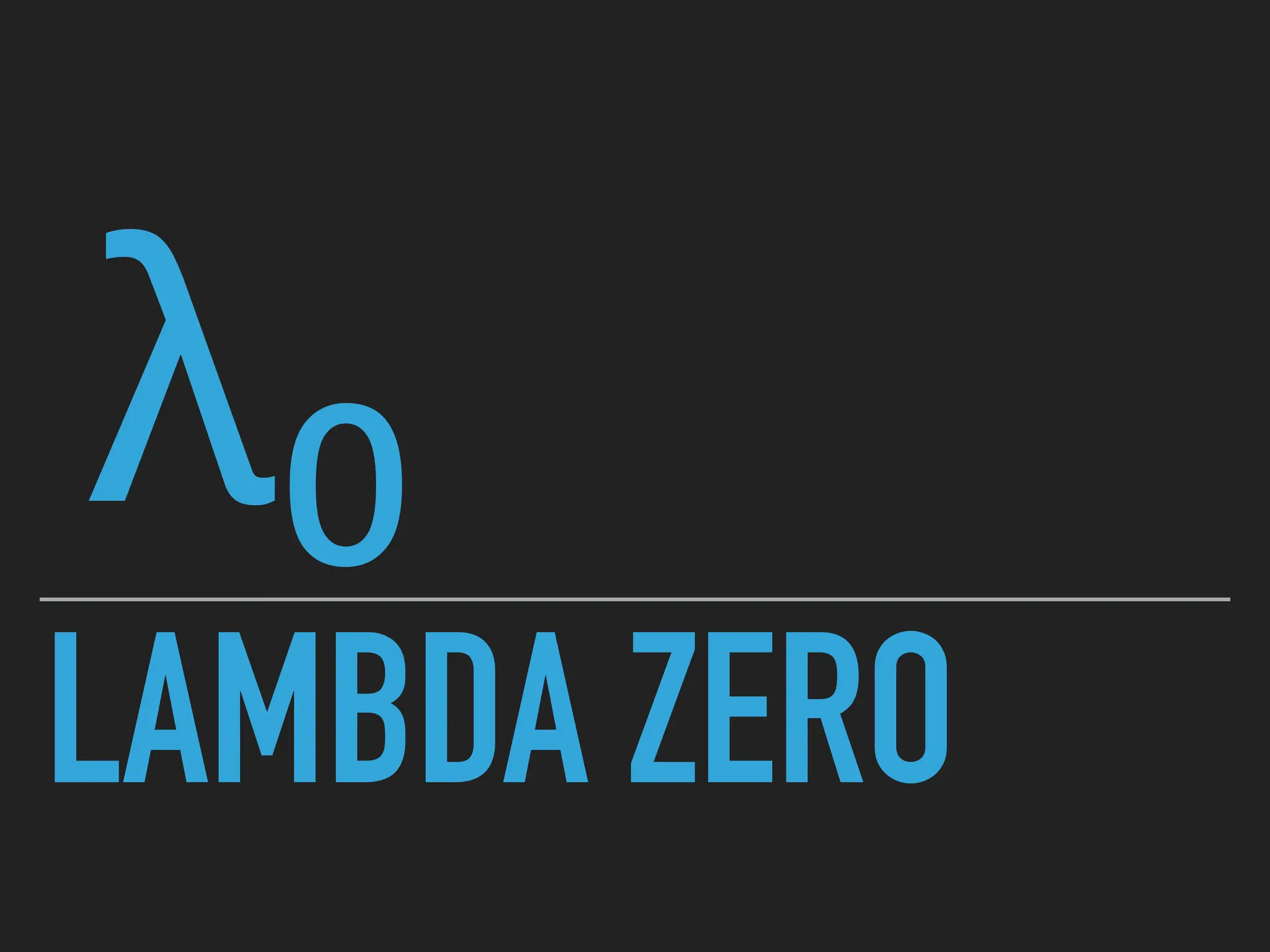
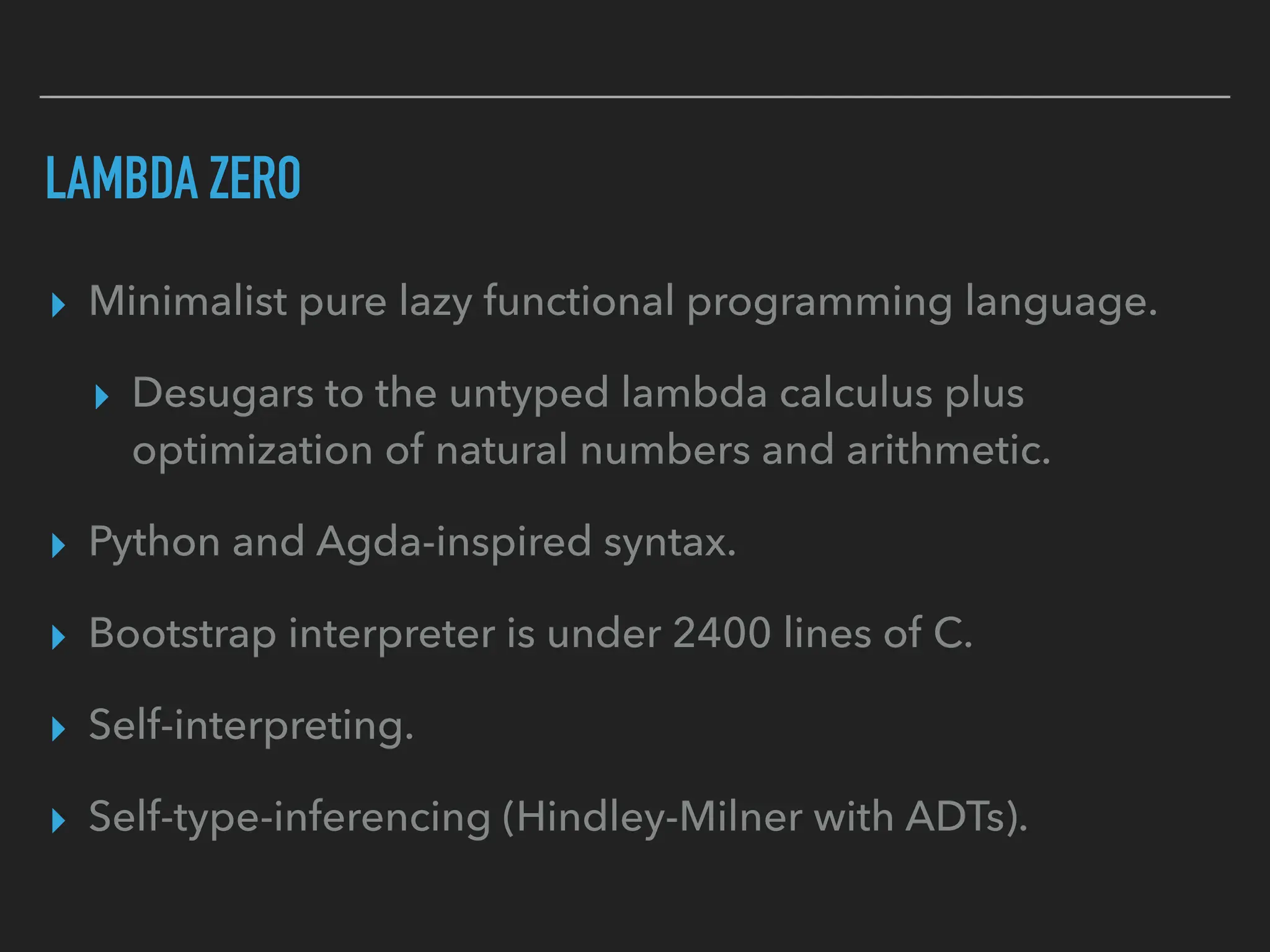
![CODE EXAMPLES n ! ≔ n ⦊ 0 ↦ 1; ↑ n′ ↦ n ⋅ n′ ! sort ≔ [] ↦ []; n ∷ ns ↦ sort(ns ¦ (≤ n)) ⧺ [n] ⧺ sort(ns ¦ (> n)) primes ≔ p(2 …) where p ≔ [] ↦ []; n ∷ ns ↦ n ∷ p(ns ¦ (% n ≠ 0))](https://image.slidesharecdn.com/lambdazero-241021235206-42ccf34d/75/Lambda-Zero-Programming-Language-Introduction-3-2048.jpg)
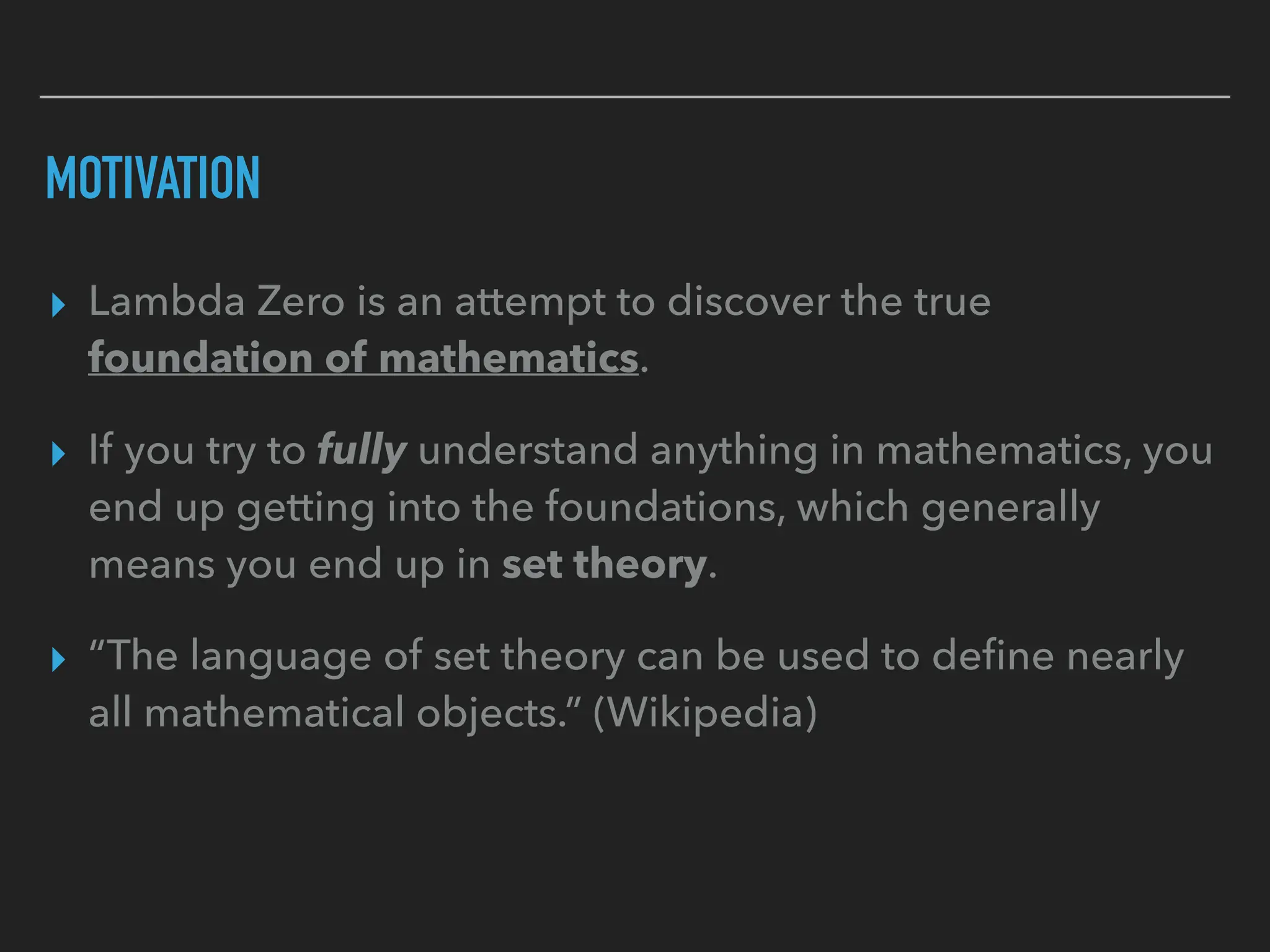
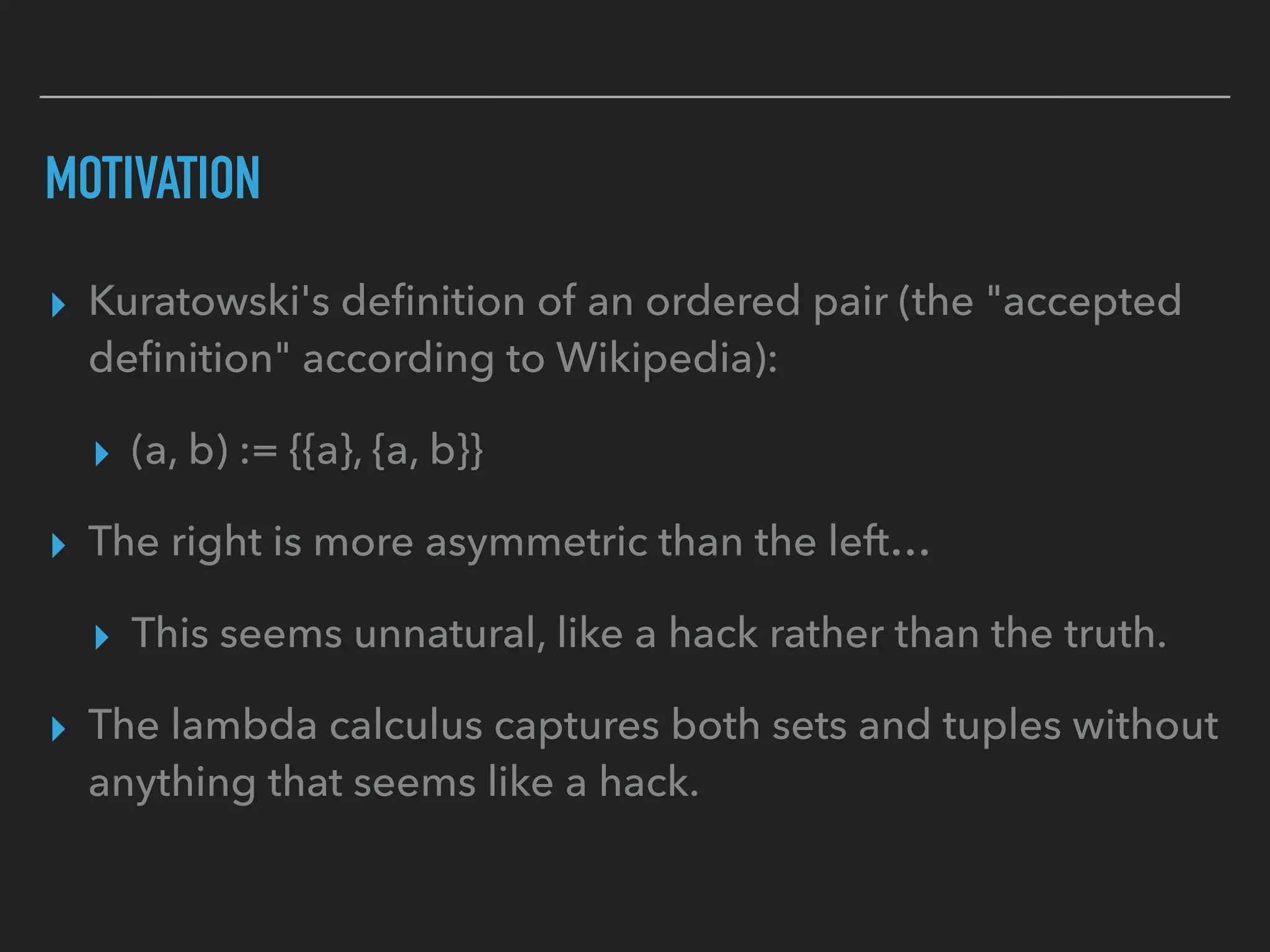
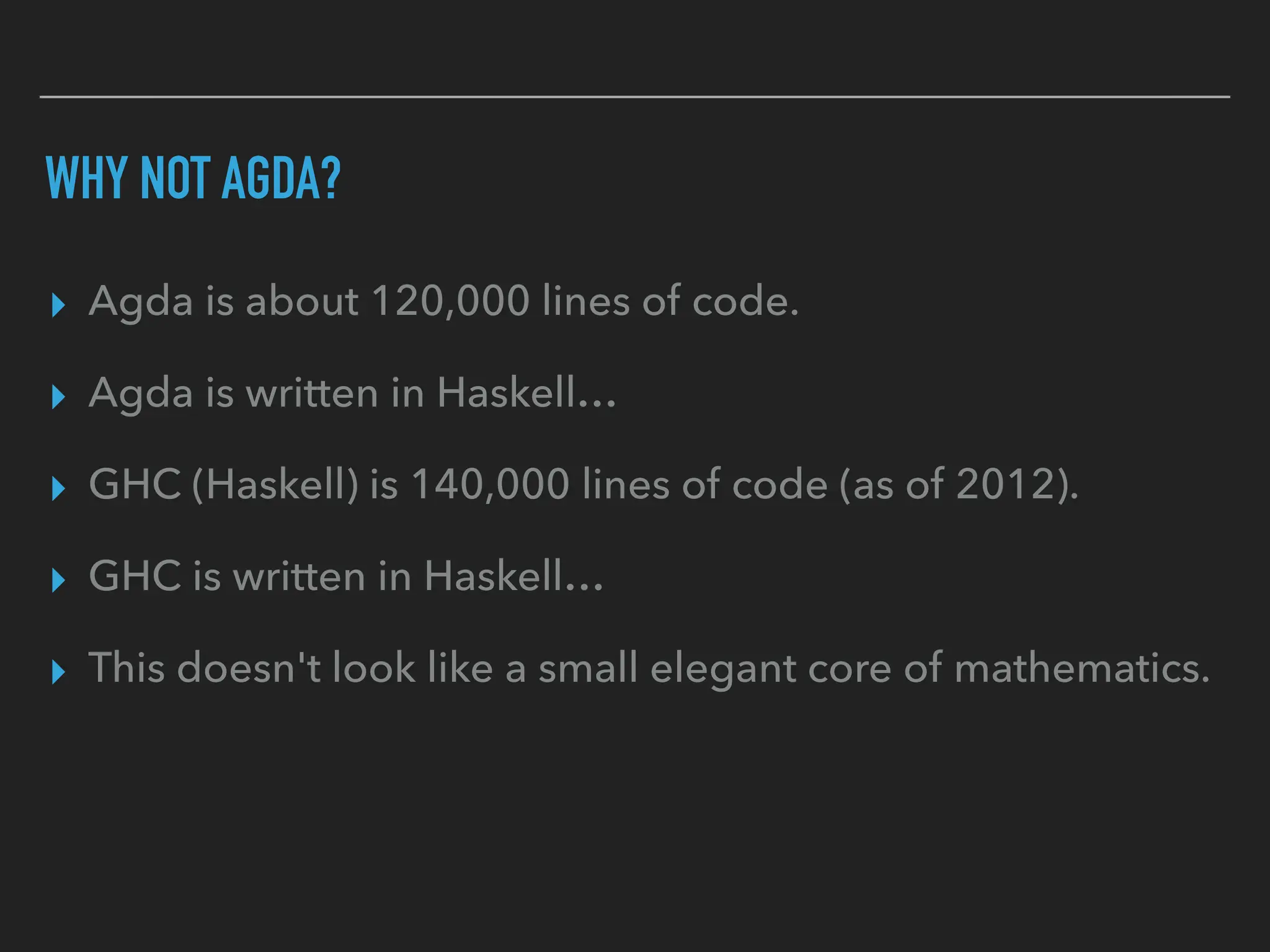
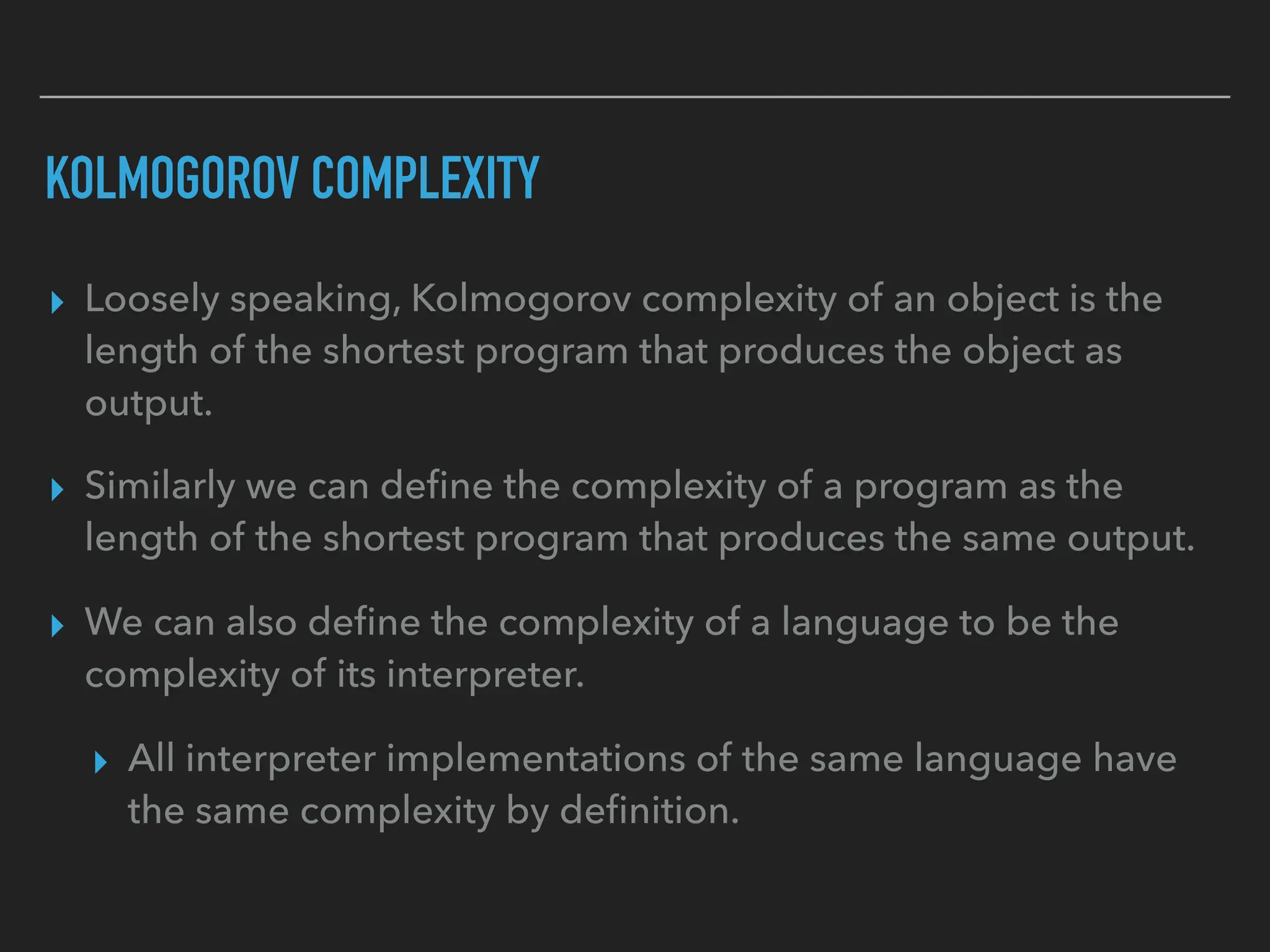
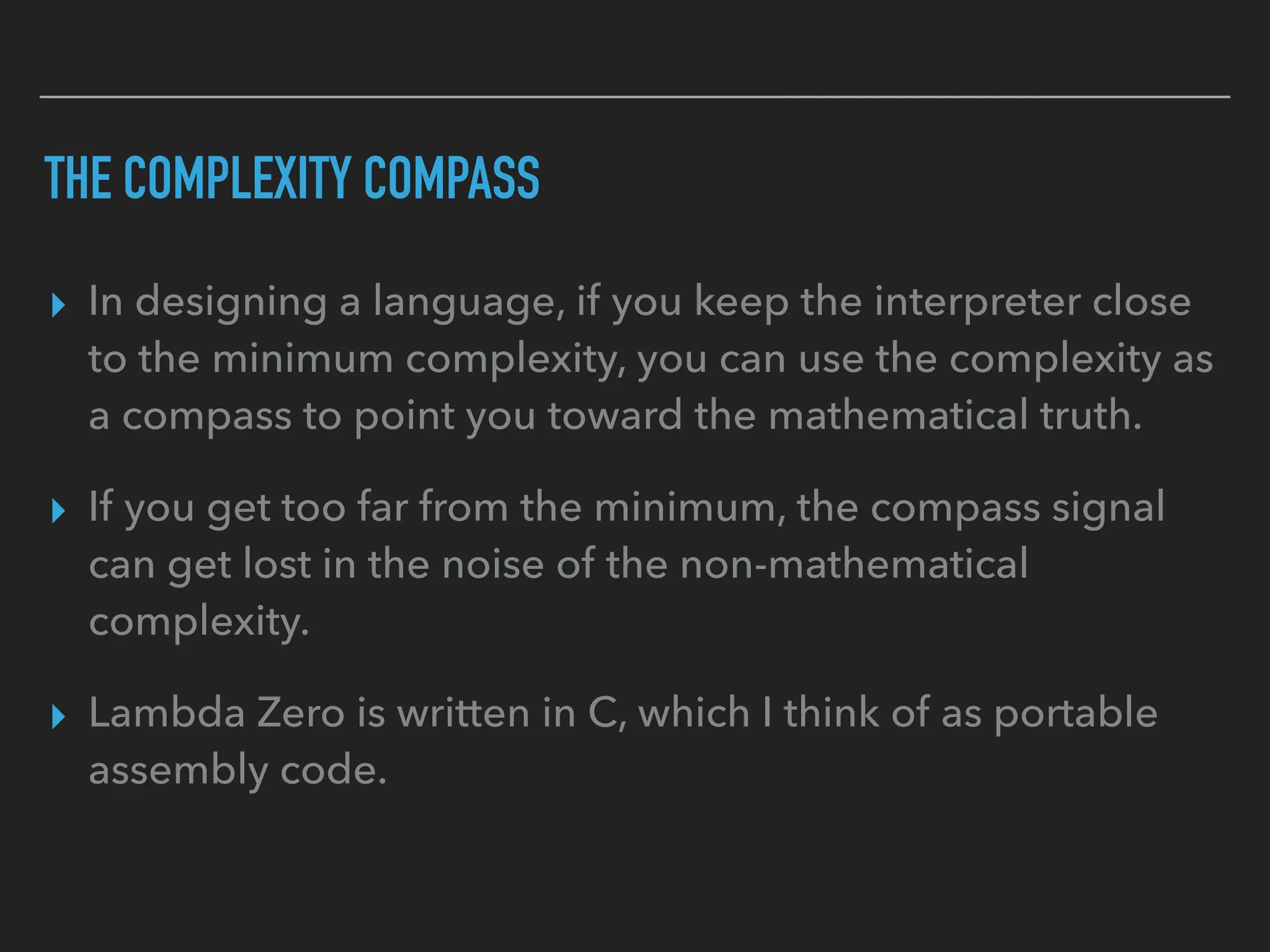
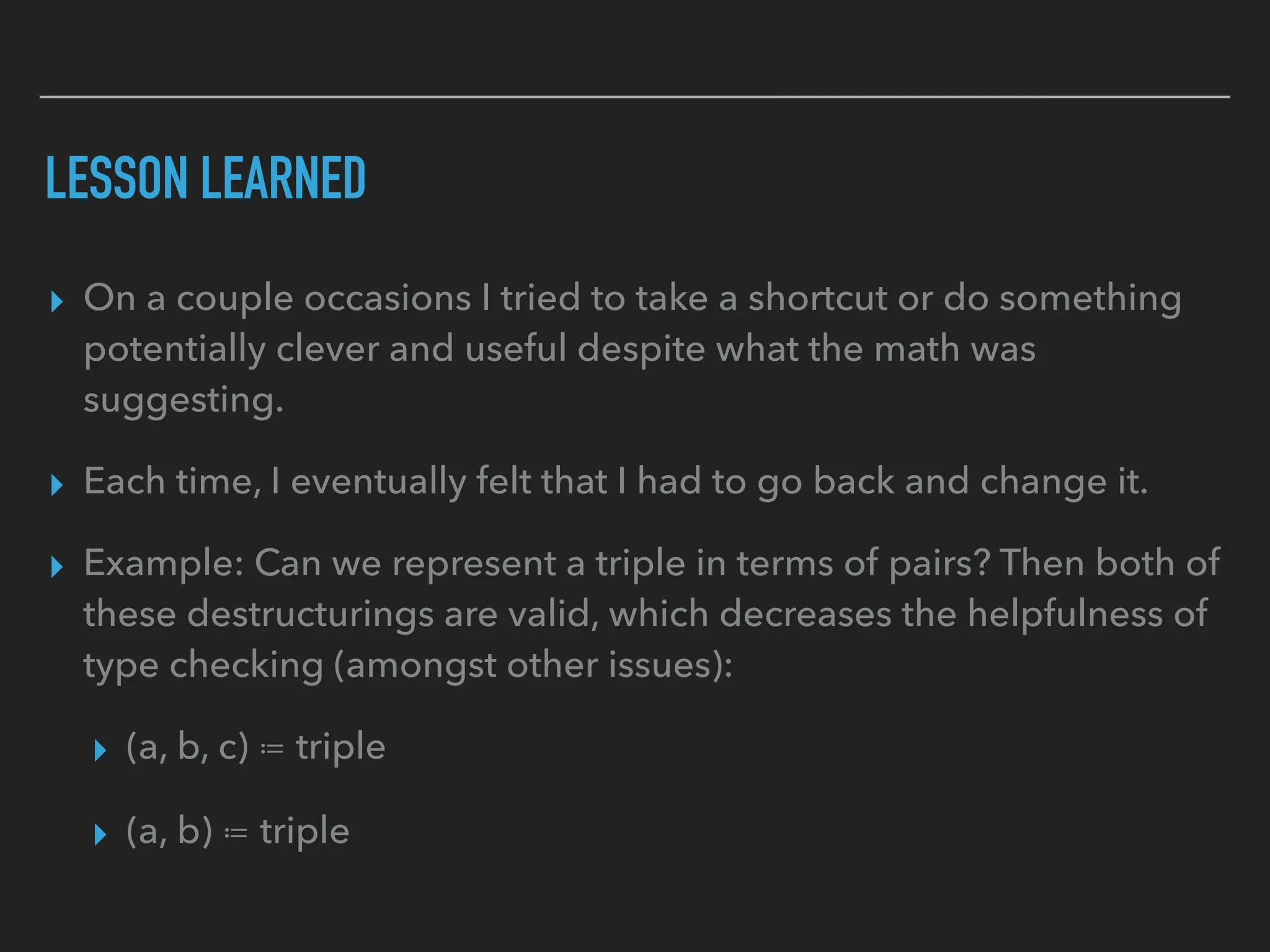
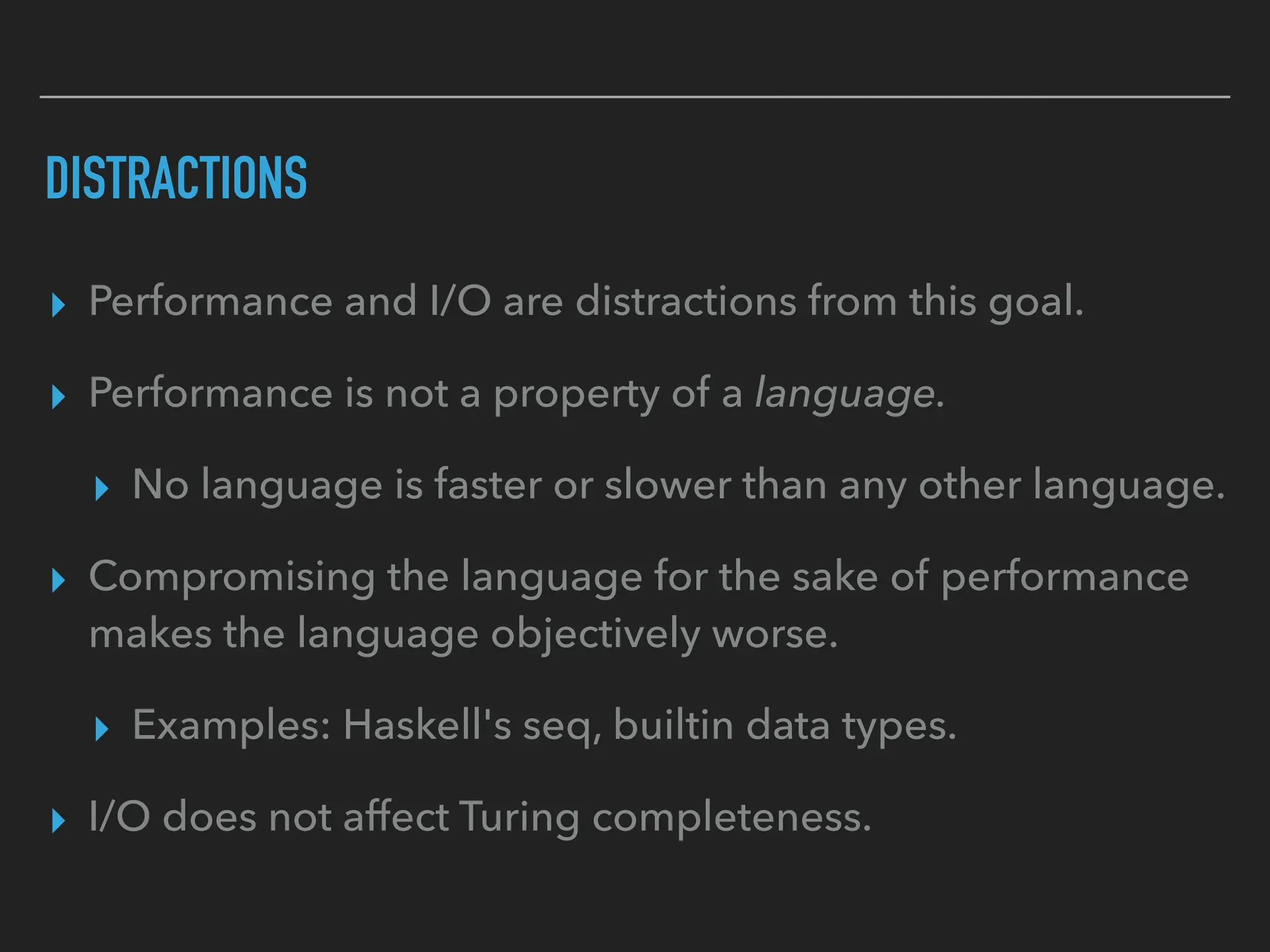
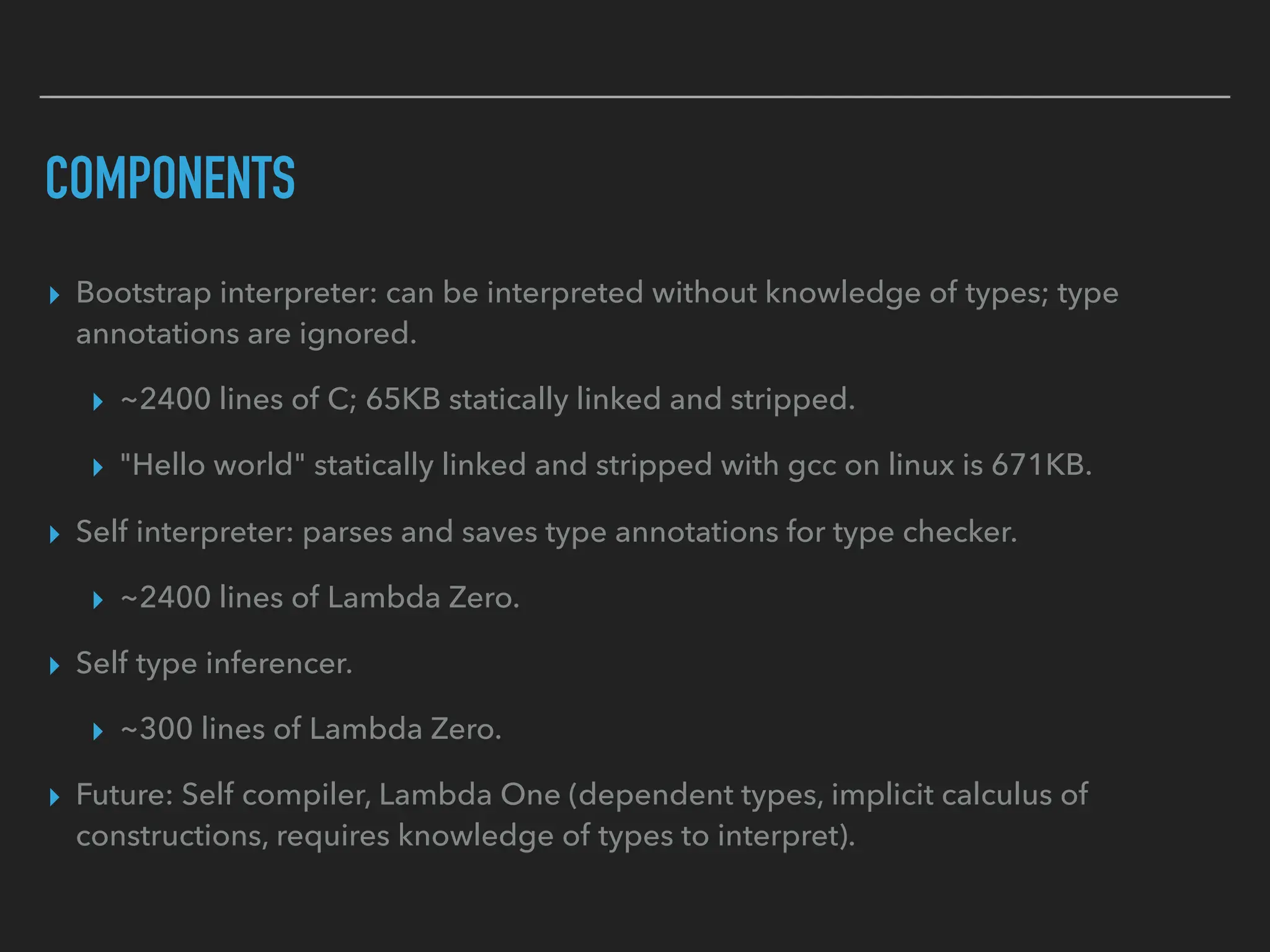
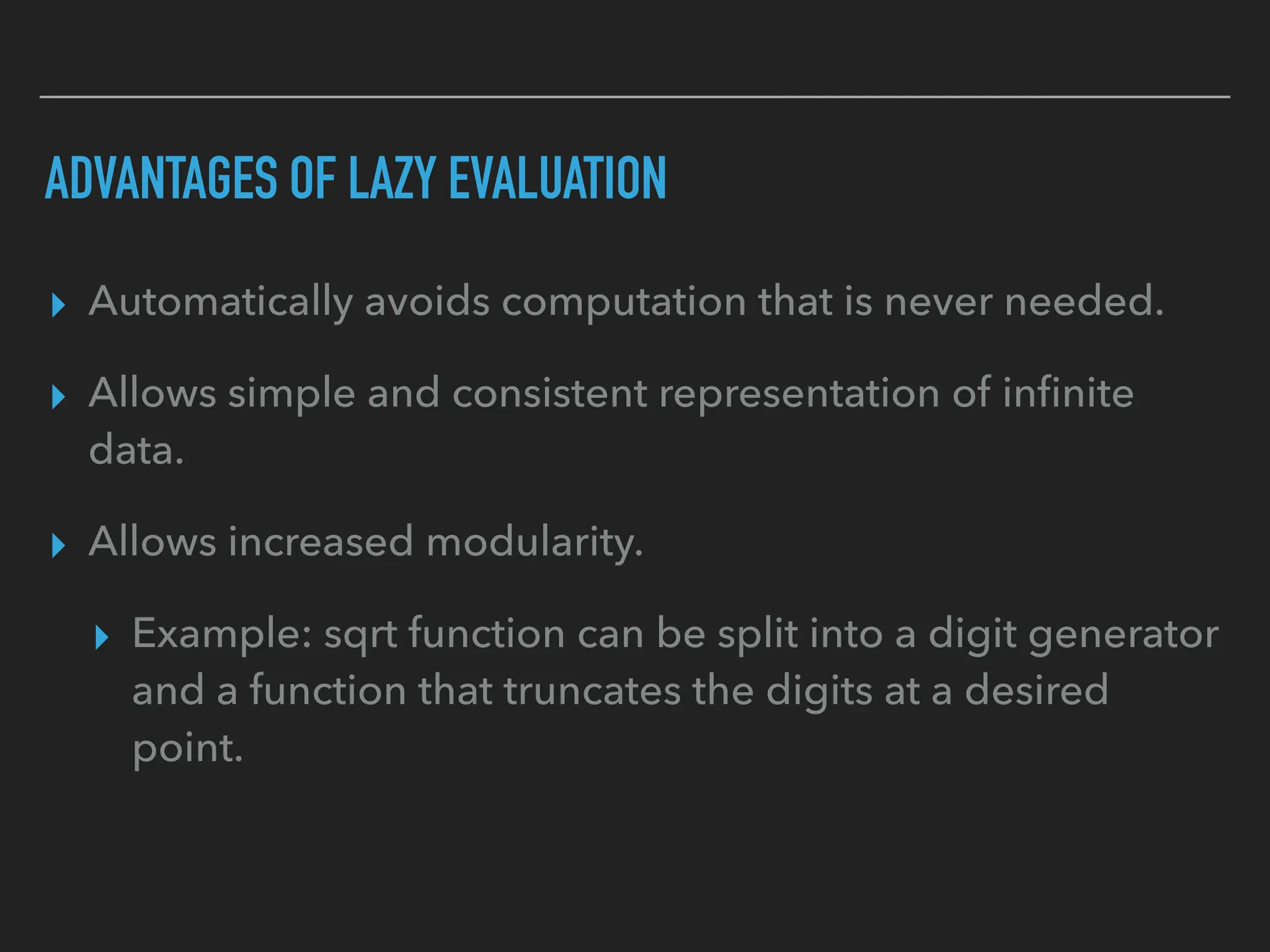
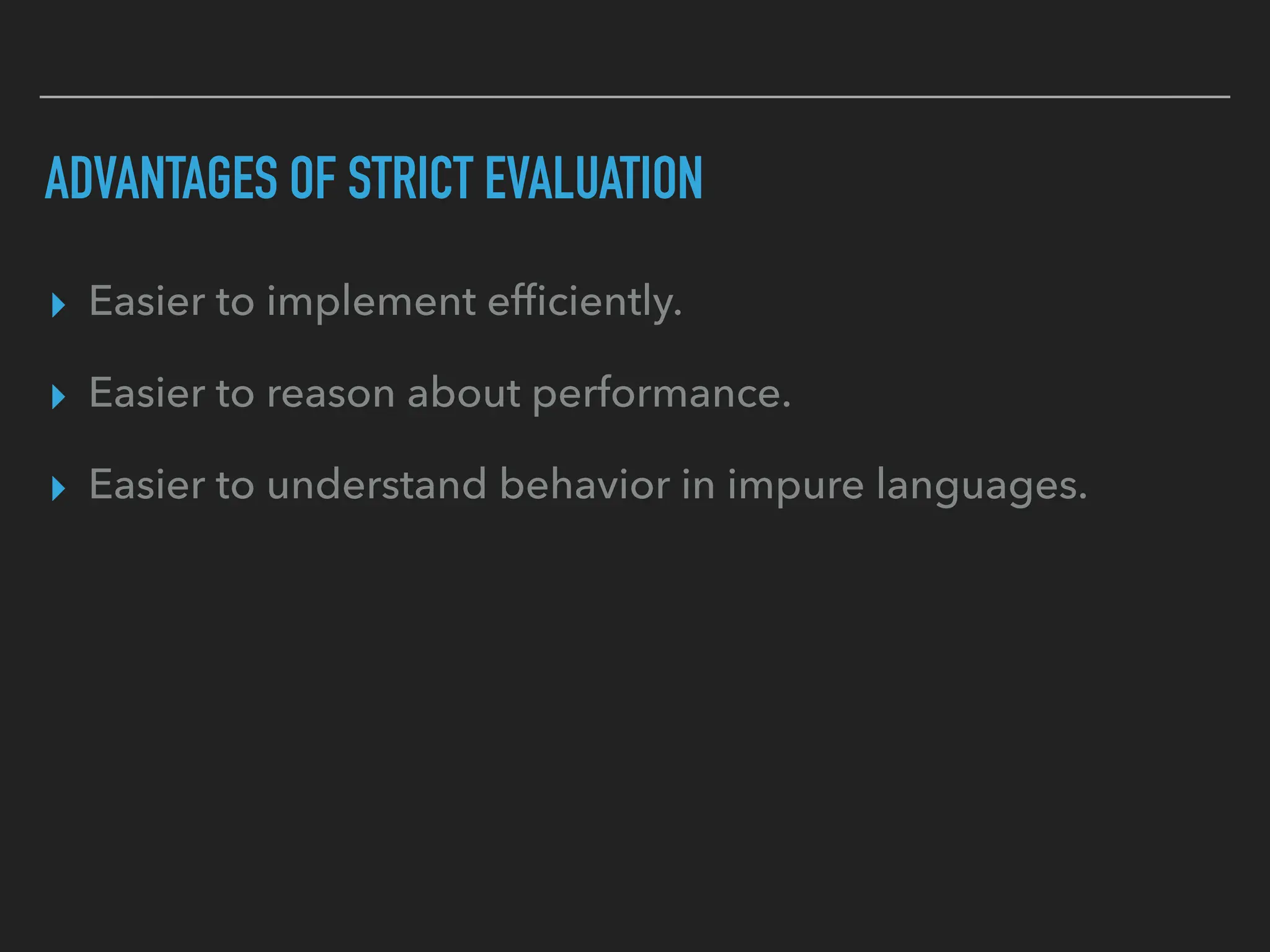
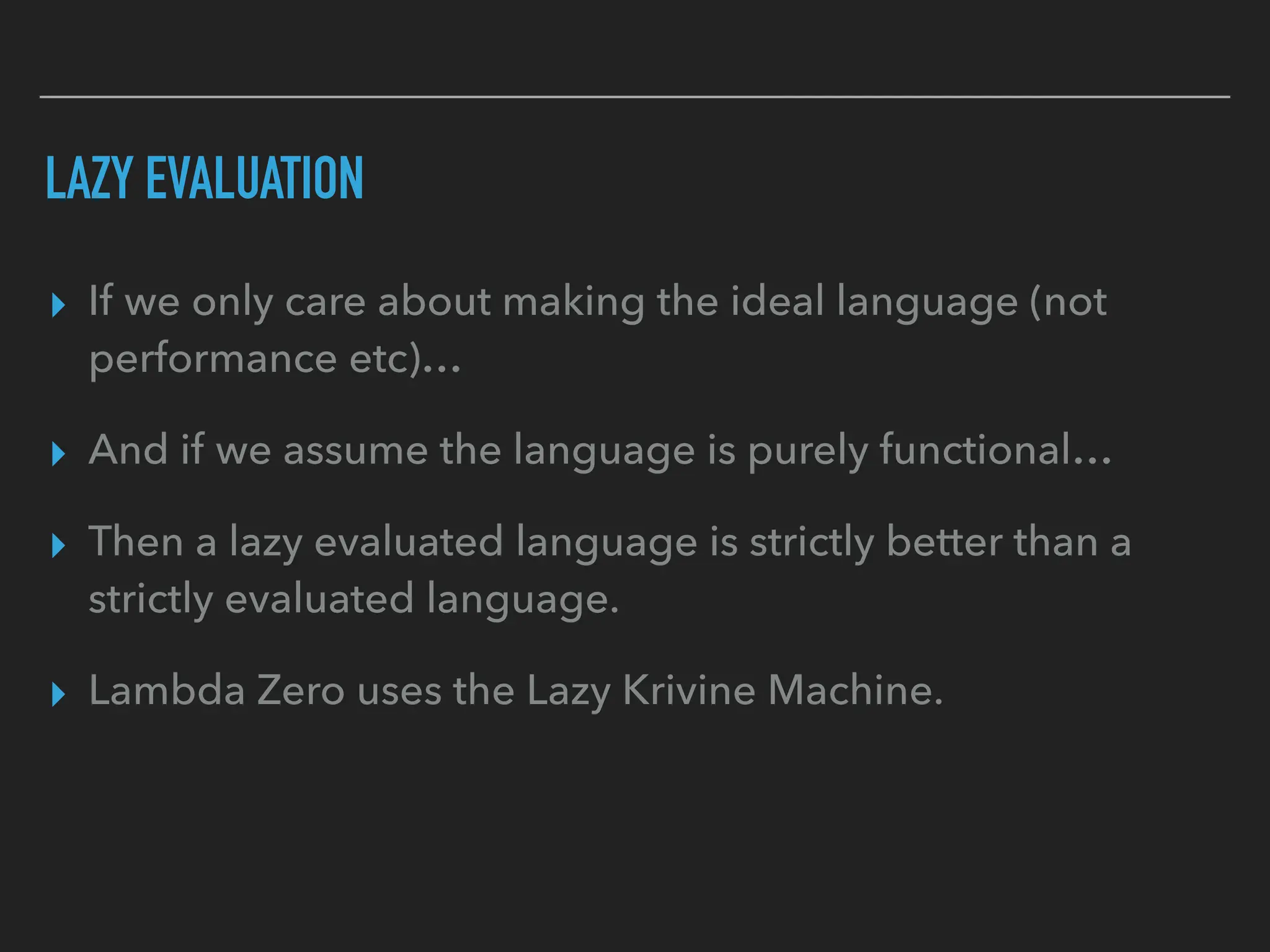
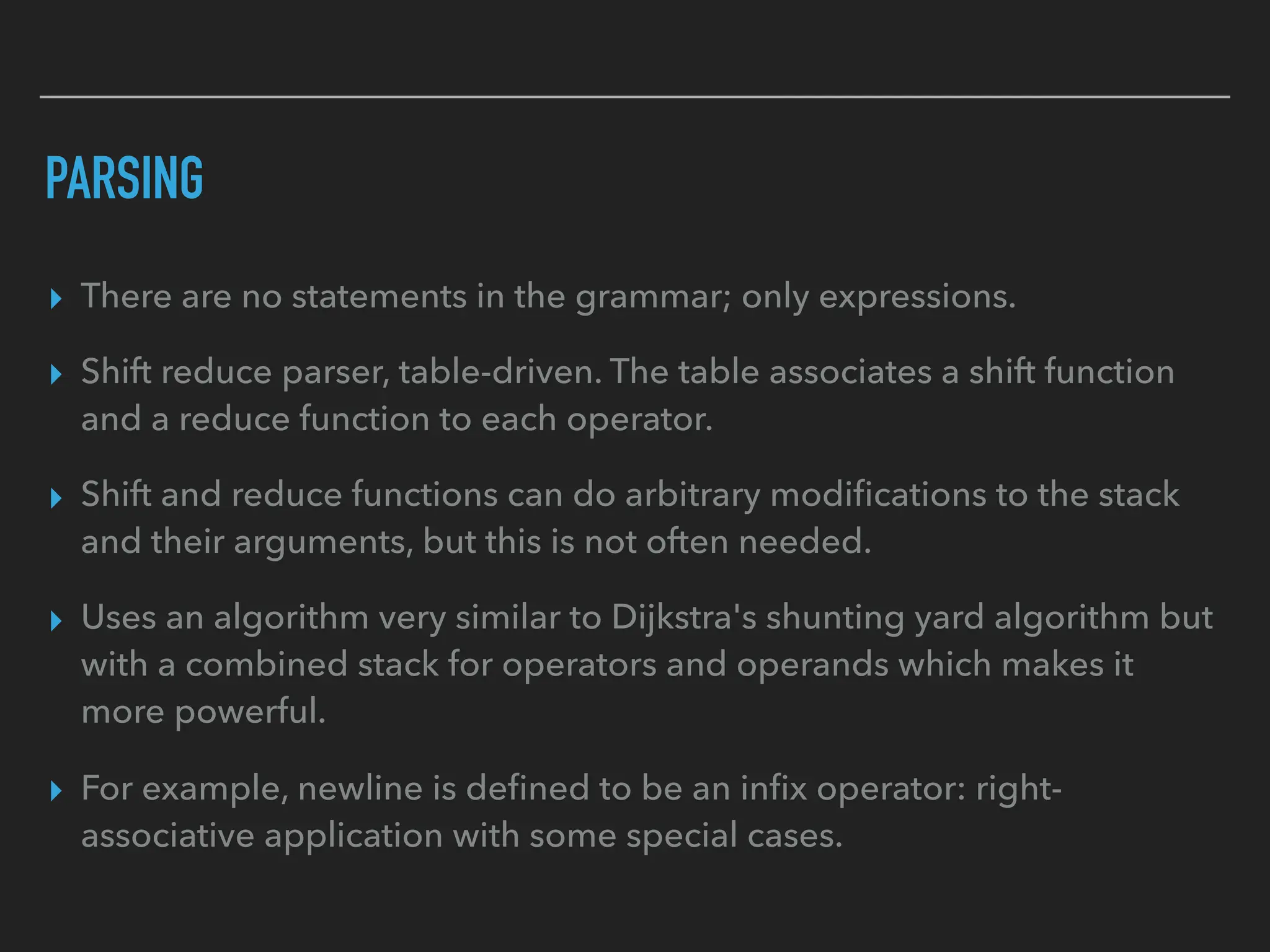
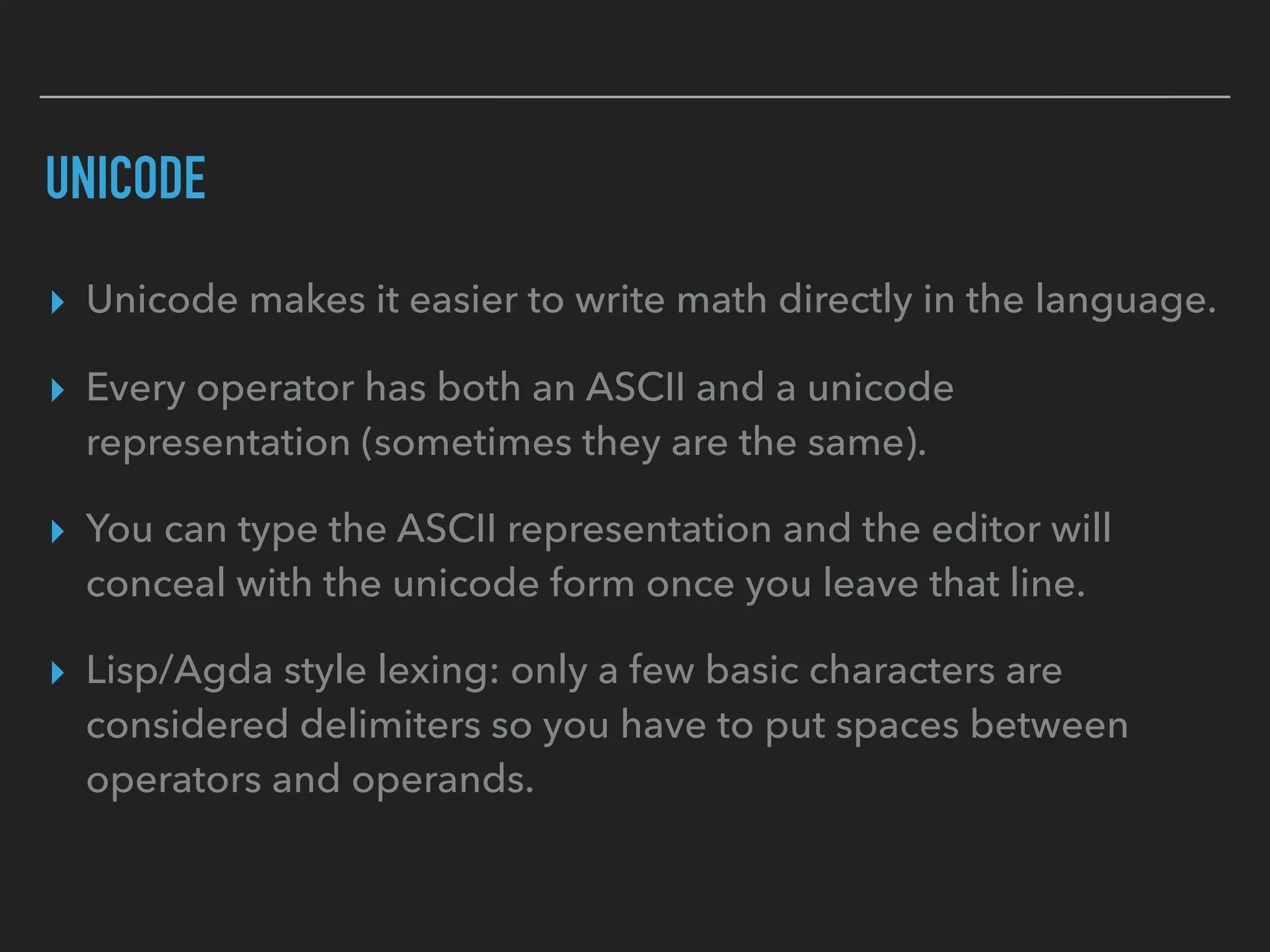
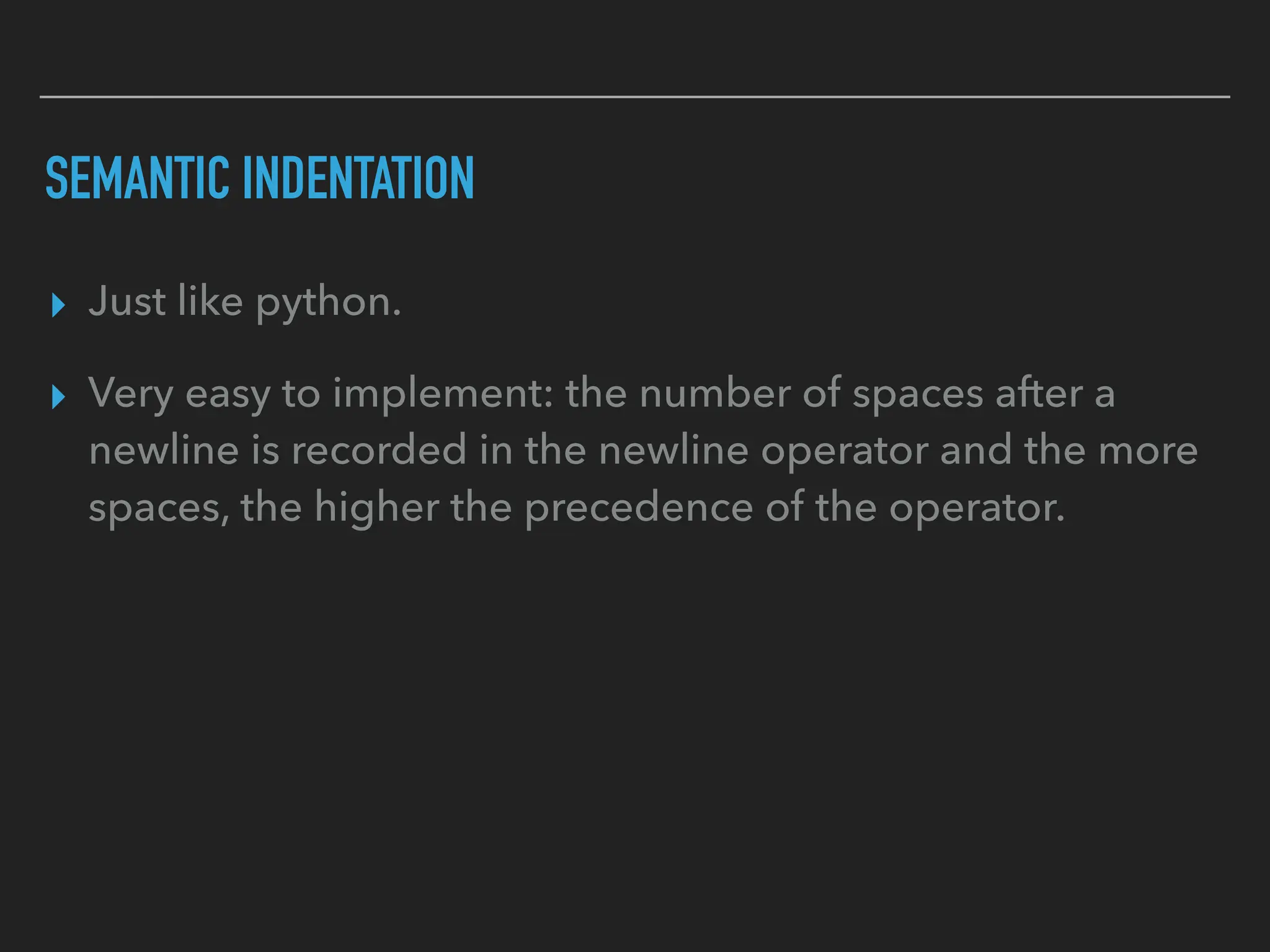
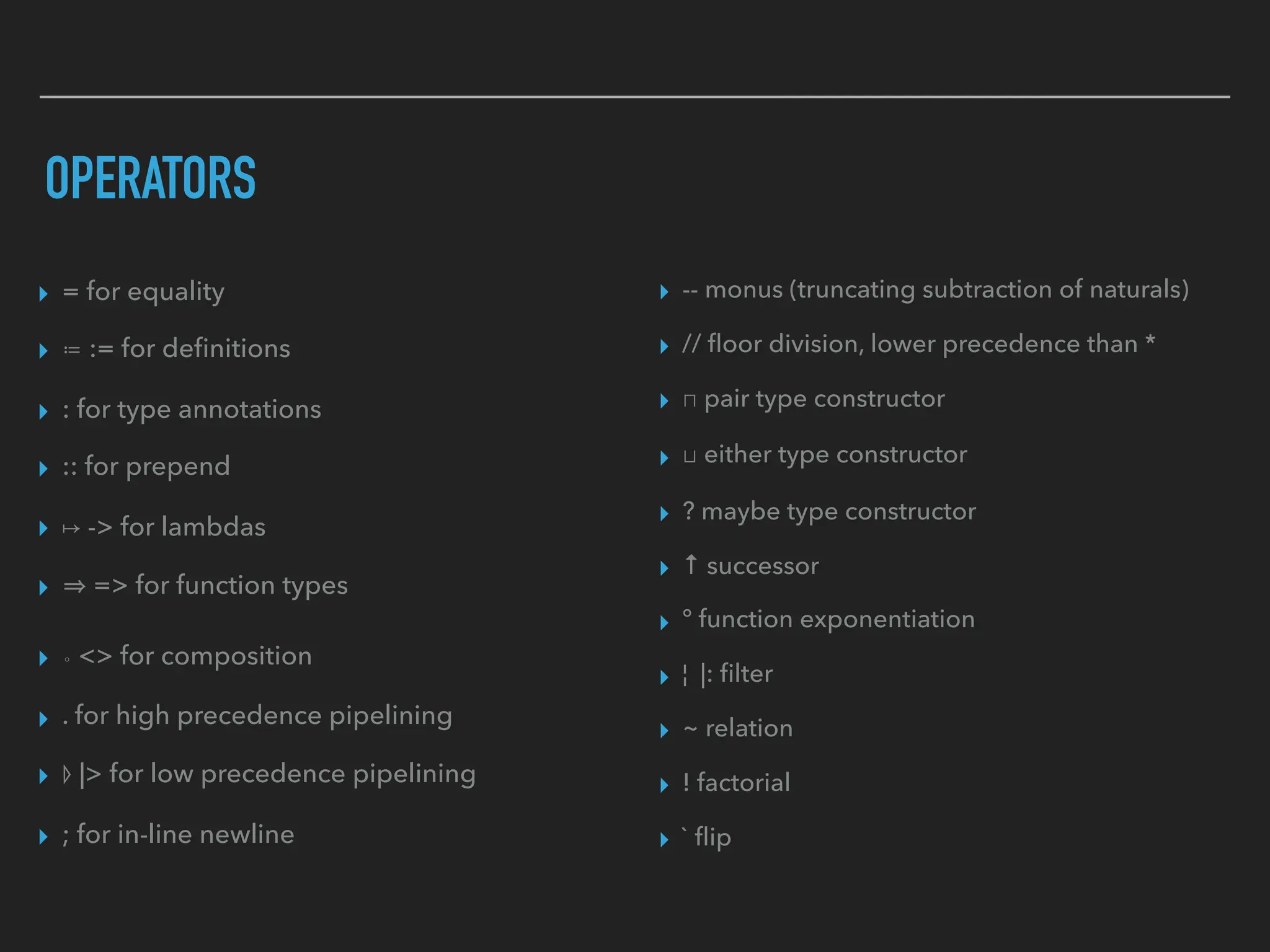
![PATTERN MATCHING length := [] -> 0; _ :: xs’ -> 1 + length(xs’) define length [] -> 0 _ :: xs’ -> 1 + length(xs’) define length(xs) match xs case [] 0 case _ :: xs' 1 + length(xs') define length(xs) with xs as _ :: xs' 1 + length(xs') 0](https://image.slidesharecdn.com/lambdazero-241021235206-42ccf34d/75/Lambda-Zero-Programming-Language-Introduction-19-2048.jpg)
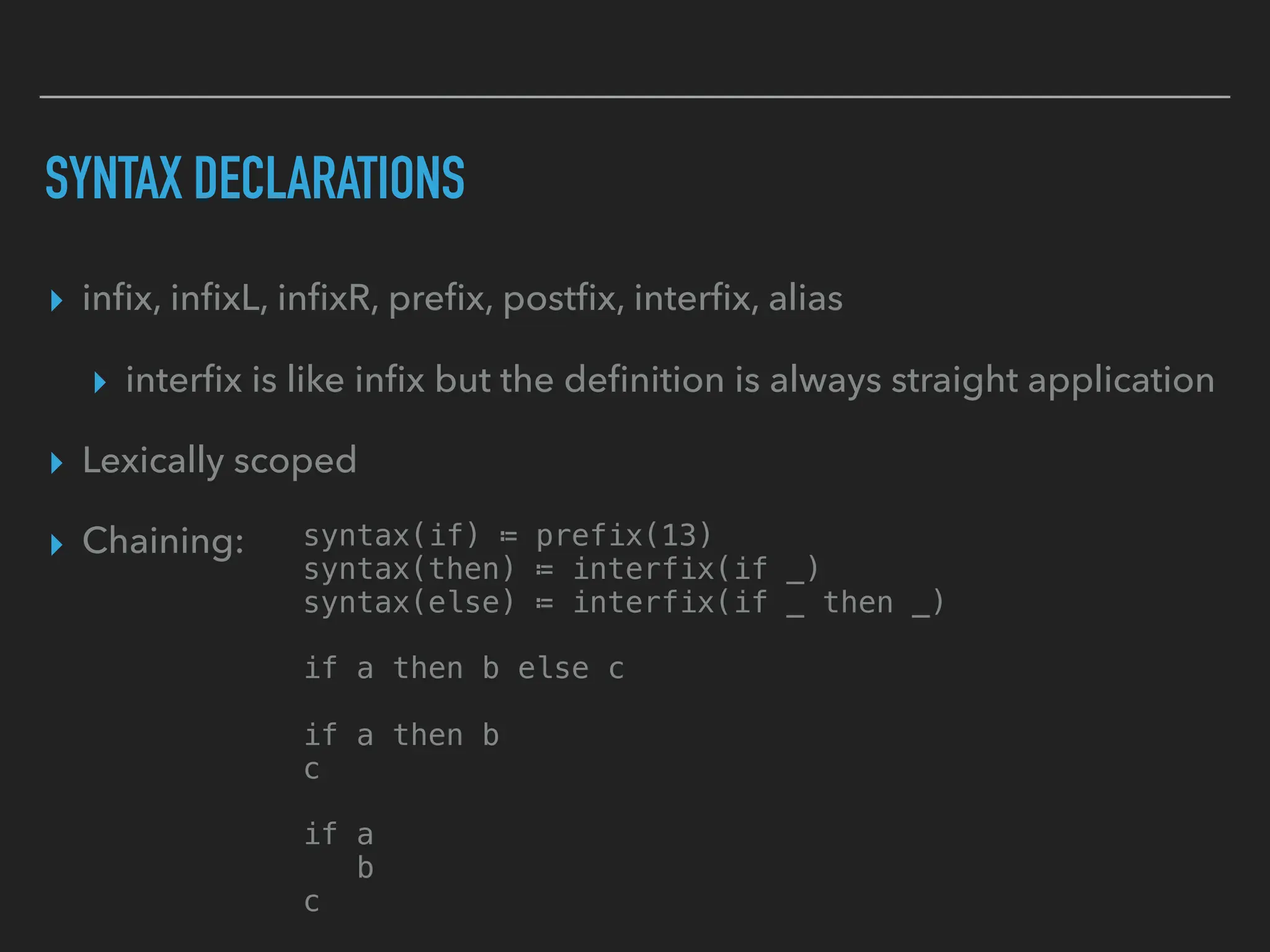
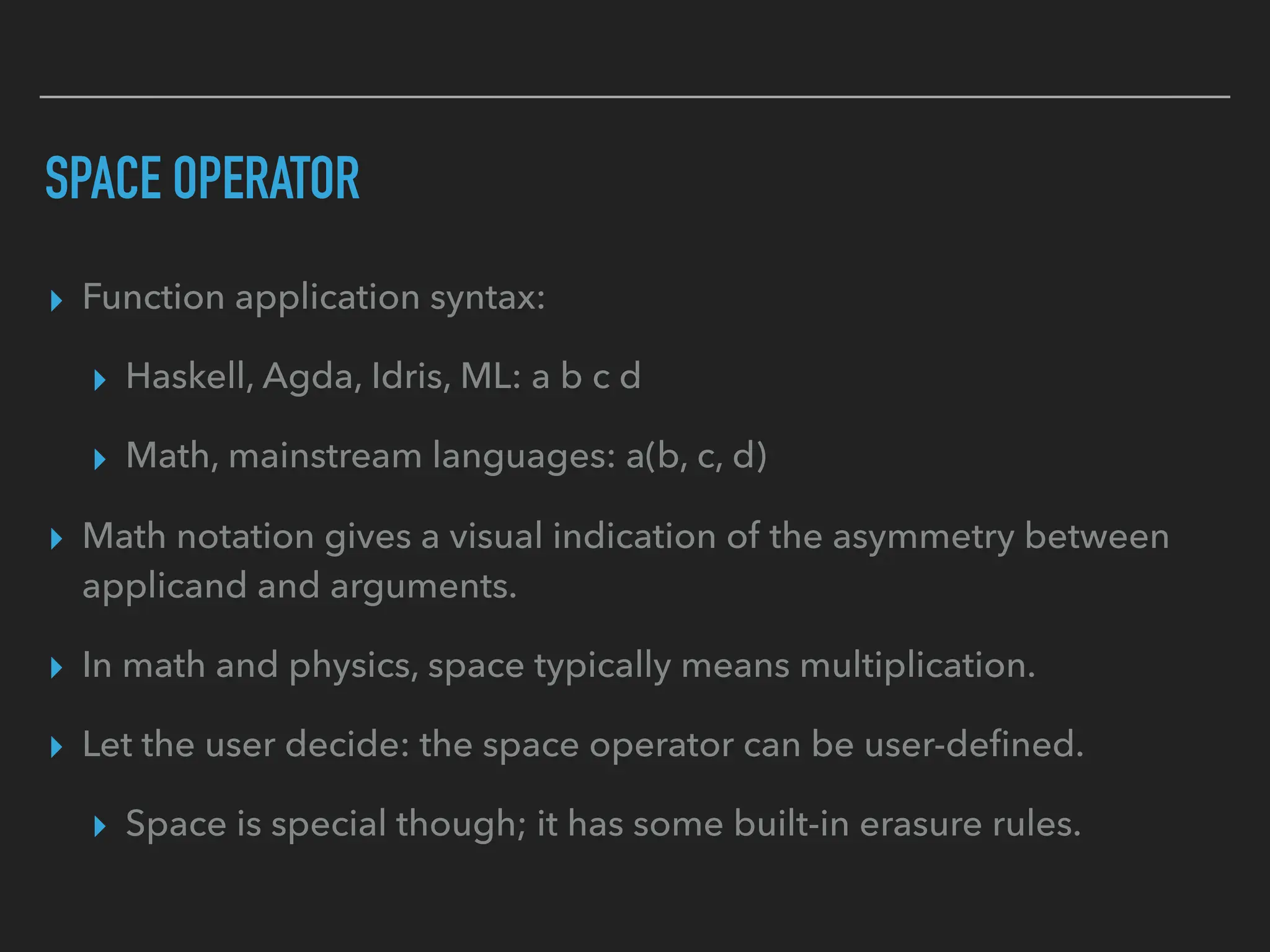
![ADT NOTATION ▸ Lambda Zero's ADT notation is a generalization of set- builder notation where the right side of the bar can be inlined on the left side. ⊥ ⩴ {} 𝕌 ⩴ {()} a ⊓ b ::= {(first ∈ a, second ∈ b)} 𝔹 ⩴ {False, True} (a)? ⩴ {Void, Just(_ ∈ a)} a ⊔ b ⩴ {Left(_ ∈ a), Right(_ ∈ b)} ℕ ⩴ {0, ↑(_ ∈ ℕ)} ℤ ⩴ {+(_ ∈ ℕ), -(_ ∈ ℕ)} ℚ ⩴ {(numerator ∈ ℤ) / (denominator ∈ ℤ)} List(a) ⩴ {[], (_head ∈ a) ∷ (_tail ∈ List(a))}](https://image.slidesharecdn.com/lambdazero-241021235206-42ccf34d/75/Lambda-Zero-Programming-Language-Introduction-22-2048.jpg)
![ADT ENCODING ▸ Implemented using the Scott encoding, which makes pattern matching trivial: you just treat the instance as a function and pass all the case handlers as arguments. (a, b) ~ f ↦ f(a, b) [] ~ n ↦ p ↦ n [a] ~ n ↦ p ↦ p(a, [])](https://image.slidesharecdn.com/lambdazero-241021235206-42ccf34d/75/Lambda-Zero-Programming-Language-Introduction-23-2048.jpg)
